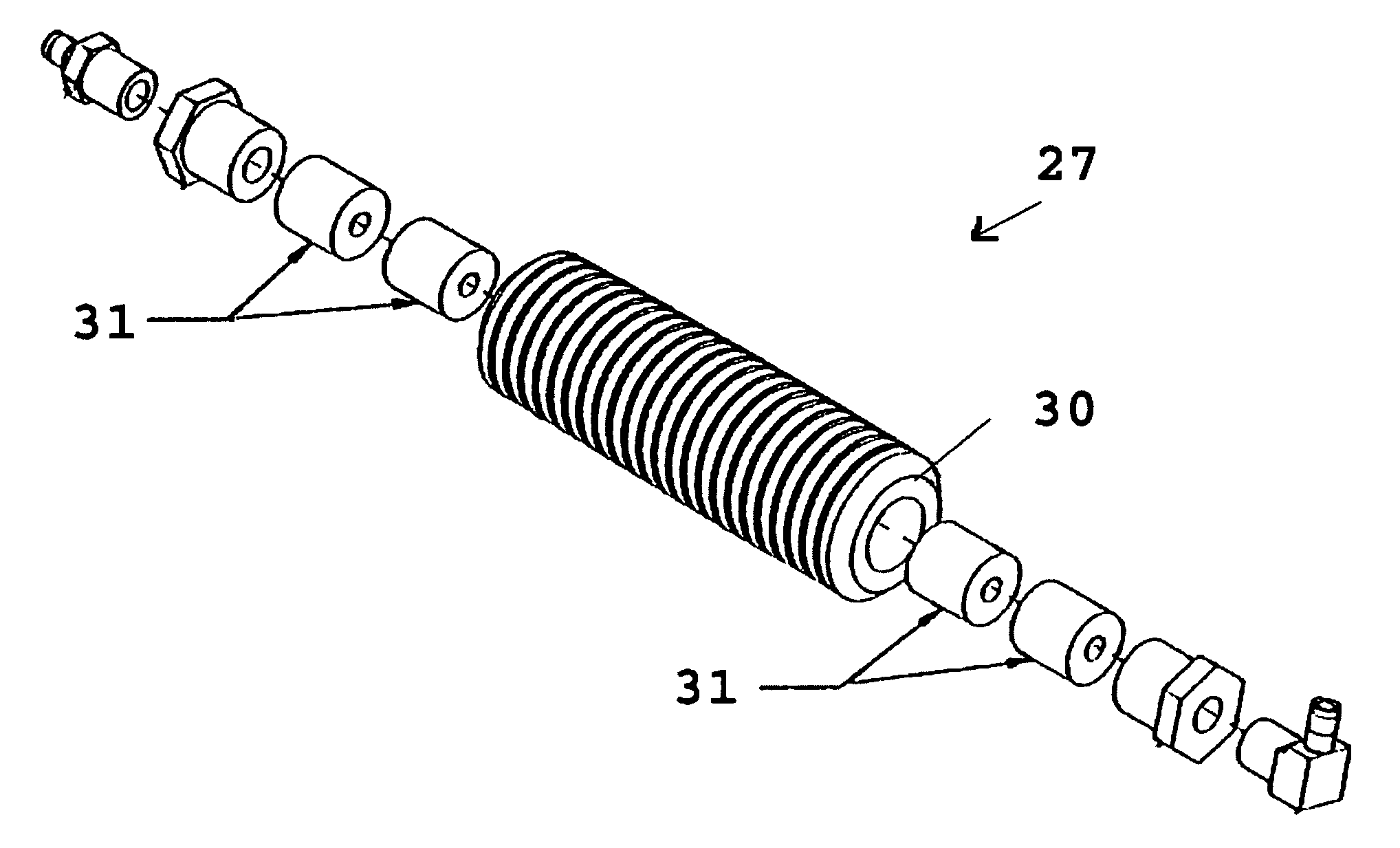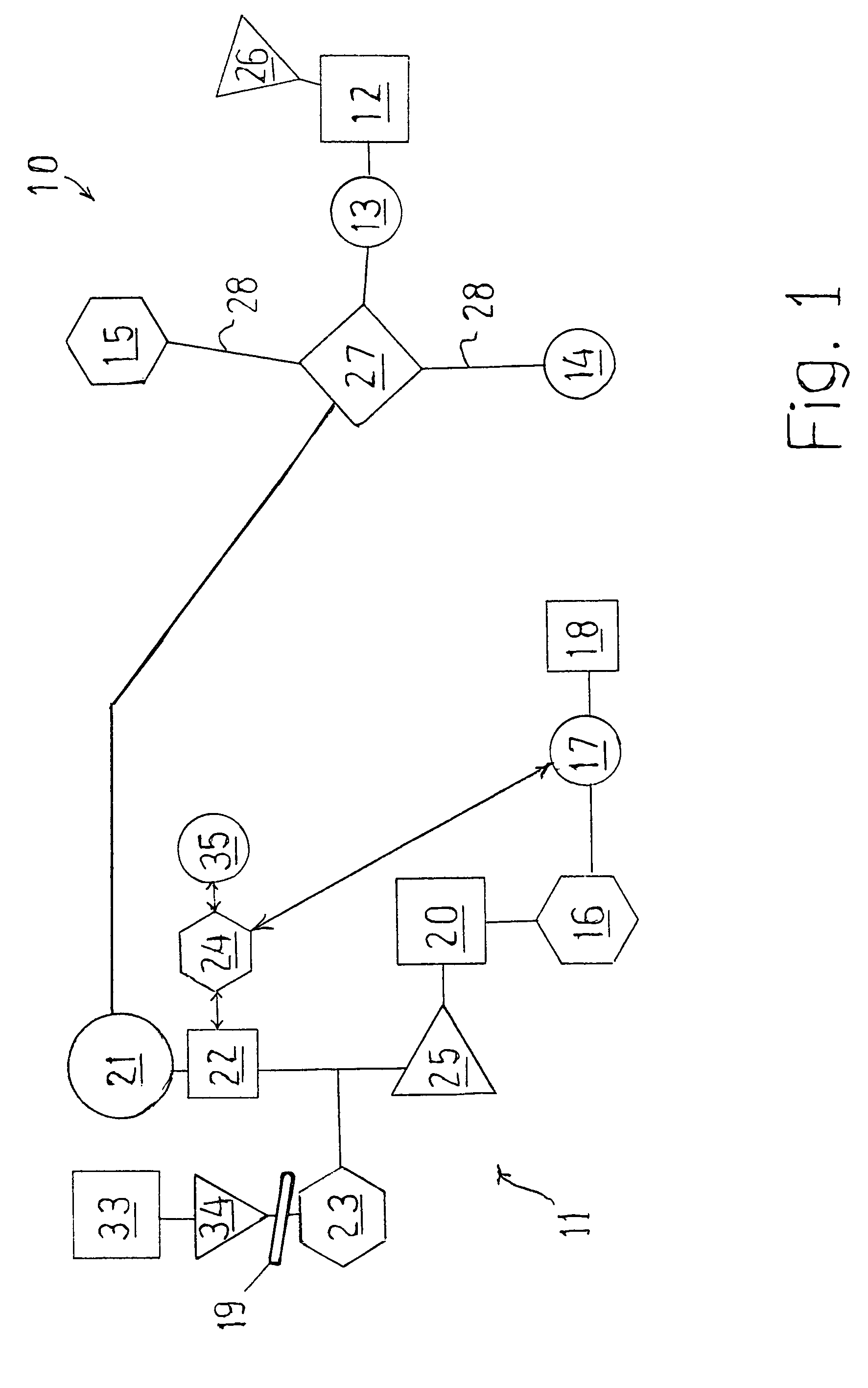System and process for improving engine performance
- Summary
- Abstract
- Description
- Claims
- Application Information
AI Technical Summary
Benefits of technology
Problems solved by technology
Method used
Image
Examples
Embodiment Construction
[0026]Referring to FIG. 1, the preferred embodiment of the present invention 10 is designed to be implemented and installed in a motor vehicle having an internal combustion engine 11, a fuel tank 12, a fuel pump 13, a water pump 14, a radiator 15, an exhaust manifold 16, one or more engine / emissions sensors 17, and a catalytic converter 18. Comprising the engine 11 are a throttle plate 19, a plurality of cylinders 20, a plurality of fuel injectors 21, a plurality of injection ports 22, an intake manifold 23, and an engine control module (ECM) 24.
[0027]In the conventional functioning of the engine 11, fuel from the fuel tank 12 is pumped by the fuel pump 13 to the fuel injectors 21. The fuel injectors 21 atomize the fuel and periodically dispense it in discrete pulses through the injection ports 22 into an airflow that enters the engine through the intake manifold 23 under the regulation of the throttle plate 19. The resulting air-fuel mixture is then drawn into multiple intake valve...
PUM
 Login to View More
Login to View More Abstract
Description
Claims
Application Information
 Login to View More
Login to View More - R&D
- Intellectual Property
- Life Sciences
- Materials
- Tech Scout
- Unparalleled Data Quality
- Higher Quality Content
- 60% Fewer Hallucinations
Browse by: Latest US Patents, China's latest patents, Technical Efficacy Thesaurus, Application Domain, Technology Topic, Popular Technical Reports.
© 2025 PatSnap. All rights reserved.Legal|Privacy policy|Modern Slavery Act Transparency Statement|Sitemap|About US| Contact US: help@patsnap.com



